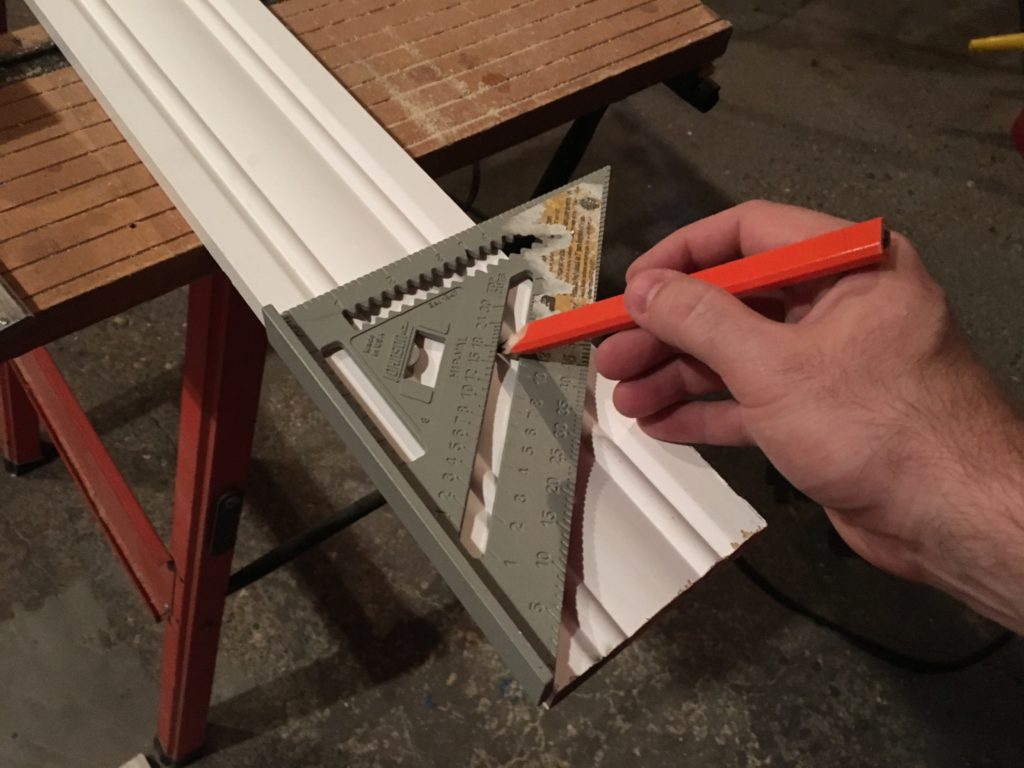
Finishing the basement bathroom (left), and putting a frame around the mirror, made us want to finally put a frame around the mirror in the upstairs bathroom (right), which we remodeled two years earlier.
In the basement bathroom, we used inexpensive pine boards and gave them a “distressed” appearance using three different colors of stain. The basement frame also needed to be functional as it held the mirror in place with grooves cut into the back side. For the upstairs mirror, we decided to go with a more polished white style of frame. We bought some white primed pieces of trim. I detail how I cut them by hand using a circular saw in this earlier post.

The big challenge with this project was how I was building the frame. Since this bathroom gets a lot more use, I wanted to be able to remove the frame occasionally to clean the mirror. That meant I couldn’t simply router out a groove for the mirror and nail the four pieces to the wall. I would need to learn how to glue together the miter cut corners.

As you see in the photo above, I used clamps to hold the two pieces together, then drilled a hole where a dowel would be inserted along with some glue.

After the glue and dowel came rubber bands, a lot of rubber bands.

Since I was in no big hurry to finish, I let the glue set for a couple of days before cutting off the extra pieces of dowel. That was followed by a little sanding and two coats of semi-gloss white paint.

The frame is held to the wall by ordinary picture frame mounting kit pieces and two nails in the drywall.

We’re happy with the results. Thanks for checking out our blog!




